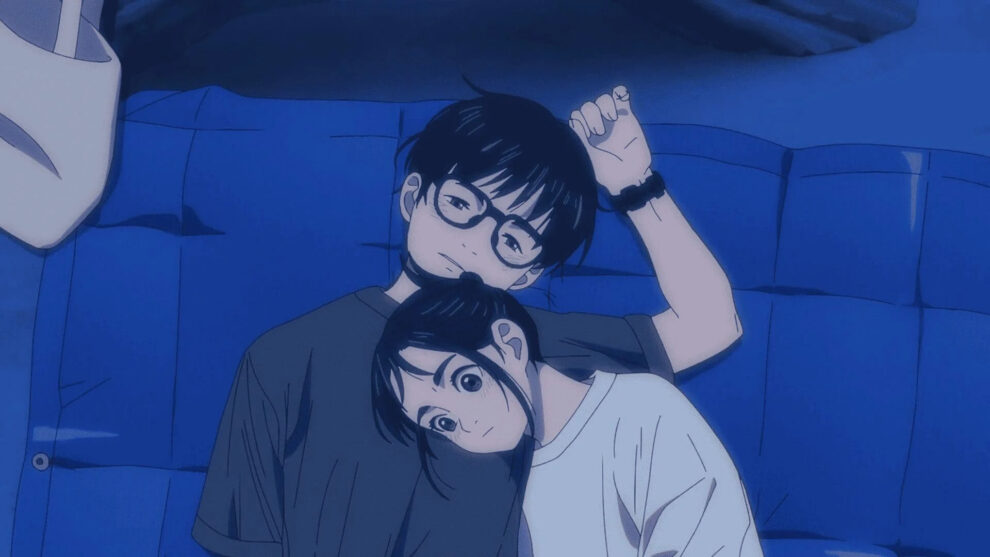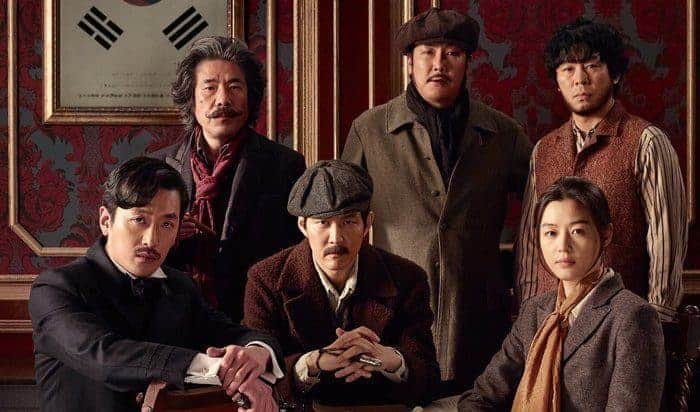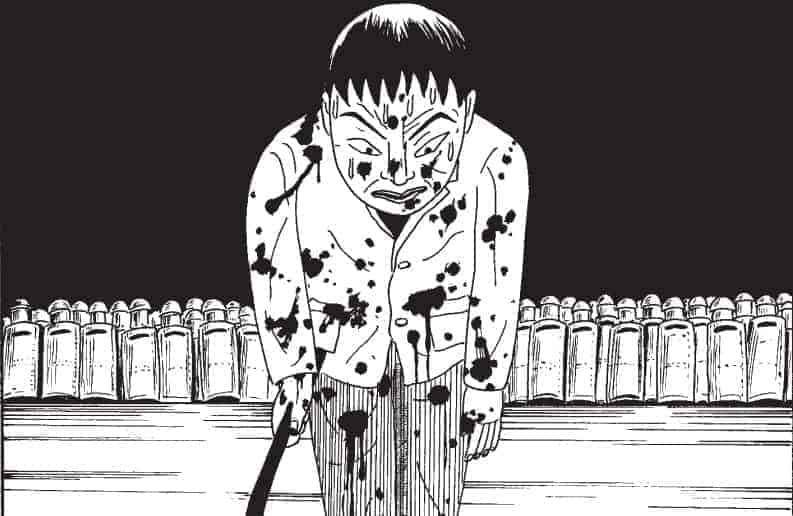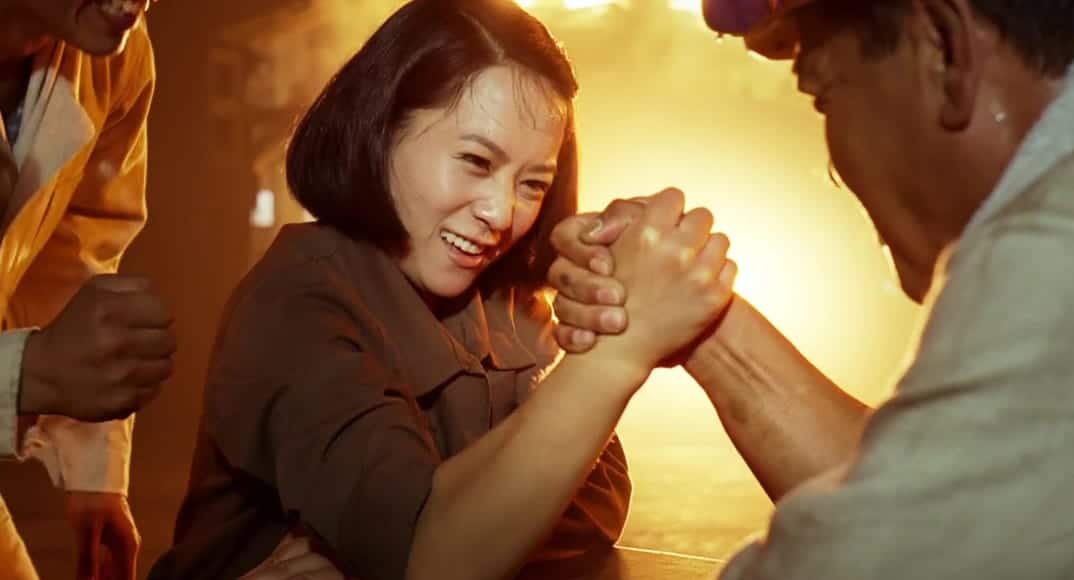Based on the slice-of-life homonymous manga series written and illustrated by Makoto Ojiro presents a rather unusual romance in its premise, but at the same time, is as Japanese as a title could be, particularly in the way it presents the ‘will-they-won't-they' aspect, which is one of the most central in the story.
The story takes place in a small rural city, where Ganta Nakami, a highschool student, is suffering from chronic insomnia, that has led him to a number of issues in his life, particularly a constant crankiness that has made his classmates avoid him for the most part, and a series of dozing-offs that frequently lead to injuries, usually treated by the school nurse, Ms Kurashiki. One day, the class rep asks him to fetch a step-ladder from the supposedly abandoned observatory, where he stumbles upon Isaki Magari, a cheerful student suffering from the same nocturnal condition as himself. It turns out the girl takes naps in the building, and eventually also invites Ganta to do the same with her.
The nurse discovers them at some point, but instead of chastising them, she encourages them to restart the astronomy club, with her “happening” to be the advisor for the particular club. She even introduces them to Yui Shiromaru, an alumna of the Astronomy Club who now runs an arcade, and eventually begins acting as the unofficial advisor and as the teacher of astrophotography for Ganta, also finding a connection with the two through her own social awkwardness. Through the dealings with the club, their naps, and the walks in the city during the night, the two insomniacs come closer together. Romance for introverted Japanese kids, however, is not particularly easy, while life soon catches up with them.
Check also this video
Talking about Japaneseness in general, “Insomniacs After School” is probably one of the titles that exhibit it to the highest degree. For starters, the ‘will-they-won't-they' is stretched to uncanny lengths, both to the inherent tendency of the Japanese not to express their feelings, and through the tendency of local cinema in general to lag, occasionally to annoying levels. In this case, it actually becomes annoying how the two protagonists are essentially a couple in everything (traveling together, sharing the same hobby, sleeping together (not sexually), opening up and trusting each other) except for admitting their feelings and relationship to both themselves and each other.
Check also the review of the live action version
In that fashion, however, it is interesting to see how Yuki Ikeda manages to move beyond these issues, and essentially come up with an anime series that is captivating from beginning to end. The first one is the uniqueness of the two characters which is also the reason they come together, with the insomnia giving the director a plethora of opportunities to show different aspects of everyday life of students in Japan, and to justify how the two come together. The walks during the night, even having to hide from the police on occasion, and later on the texting after hours works quite well here, adding significantly to the whole romance. Isaki's condition adds even more, with the role the heartbeat plays as a concept in the series being truly adorable.
The second one is the way the two of them, but particularly Ganta, change through their meeting and overall company, as we watch them mature, open up, and in the case of the boy, overcome his social awkwardness. Furthermore, the comment on how to deal with the despair that results from trying with all your powers and failing, and for issues such as insomnia, which are not easy to be solved, adds even more depth to the narrative. This aspect also allows for the introduction of the rest of the characters in the lives of both, with the appearance of Yui, who is, in every aspect, the female version of Ganta, Kurashiki, who takes the role of the higher mentor after Yui, and the rest of their classmates, who essentially cheer for the two protagonists to finally get together.
The third one is the concept of the astronomy club and astrophotography, which are also rather appealing, adding to the romance while inducing the series with an educational aspect that also works well, particularly due to the realism and the amount of detail it is presented. In the same line, the actual photos in the ending of each episode add another unique element to the series.
The fourth is the tour guide aspect, with the duo exploring various, mostly remote locations in Japan in search for the perfect photograph, in an aspect that is both interesting to watch and adds to both the romance and the aforementioned concepts.
Lastly, the way the story unfolds, what will happen in the end is never certain (the two could possibly not share their feelings ever or one could even die for example) which adds a certain level of agony to the series. As such, and despite the lagging, the catharsis that takes place when the outcome is finally revealed is quite impactful, in definitely the most memorable scene of the anime.
Some issues do exist however, and Ikeda does not avoid many of the cliches of the genre, with the archetyping of the students, the visit to the beach and the festival where the girls wear kimonos. Even those, though, are relatively well embedded in the narrative, and do not fall in fanservice territory under any circumstances.
Yuki Fukuda's character design is of the utmost realism, while the characters definitely differ from each other, with the way the grown ups are presented (clothes and hair) highlighting their difference from the protagonists nicely. The blushing in the faces of the protagonists is also well depicted. The backgrounds are quite beautiful, adding to the appealing of the whole concept of astrophotography. The animation by Liden Films also moves in the same realistic lines, without any exaltations.
Even though “Insomniacs After School” frequently emerges as ‘too Japanese” as a whole it definitely makes sense, resulting in a romantic drama that is captivating both for its main element and for the plethora of secondary ones.
















